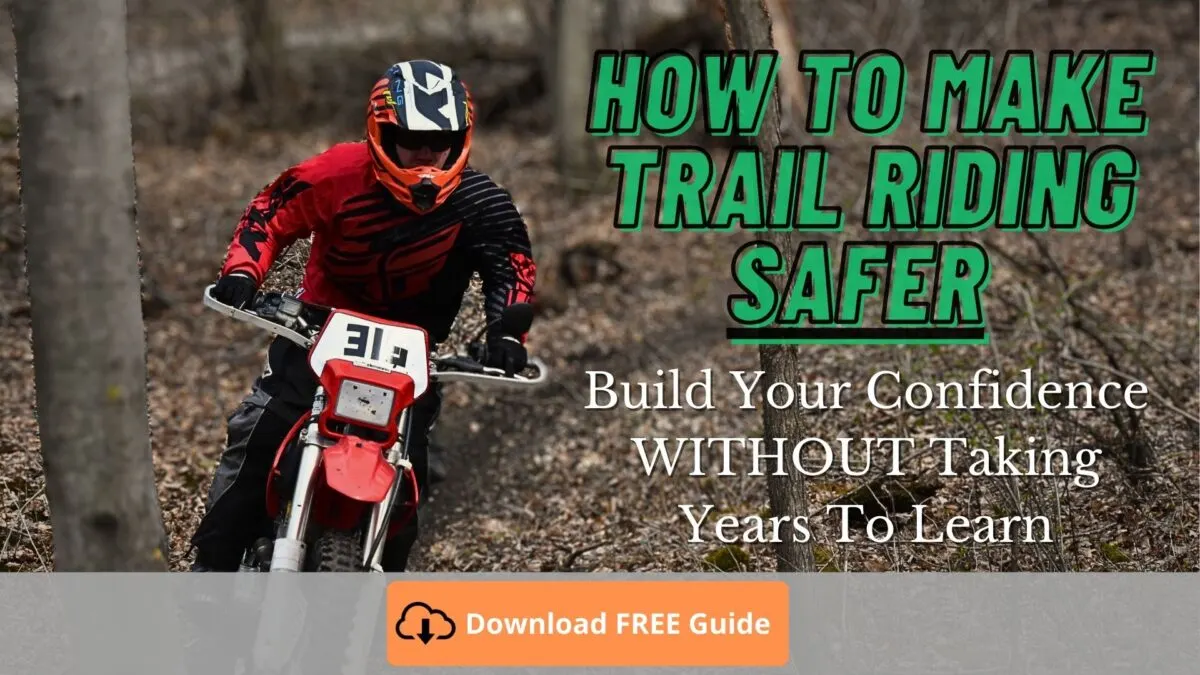Proper riding position and technique is a must if you want to become a good dirt bike rider, but no one shows you what it actually looks like.
If you want some tips to better control your dirt bike that will actually improve your riding, keep reading.
Why Is Good Technique So Important?
Your riding position, form, or the way you ride a dirt bike is not only critical to making you a better rider, but it's crucial to your safety as well.
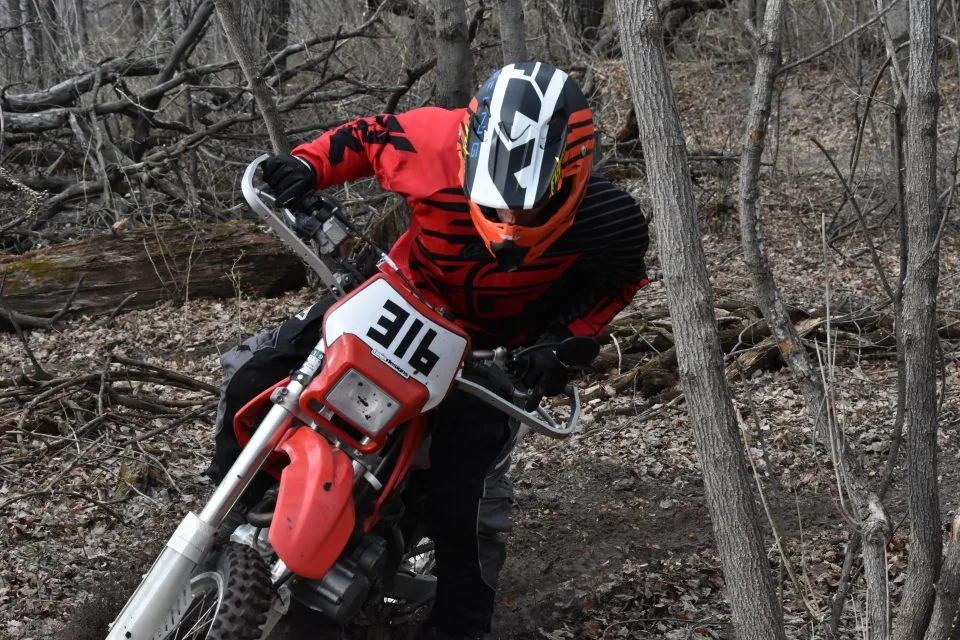
Poor riding technique produces bad habits, and these habits can come back to bite you, resulting in a bad crash that affects the rest of your life.
For example:
Knowing where to position yourself on your bike can be the difference between flying over the bars riding down a steep hill and having fun by conquering a a technical hill.
How do you ride a dirt bike better?
Want to ride like a pro rider? You must learn the basics of riding technique. Just learning on your own will develop poor technique habits. This will slow your progress down, make it harder to increase your skill, you’ll be more likely to crash and get hurt, as well as take longer to change these bad habits in the future.
Where to sit on a dirt bike
Where you sit on the seat of your dirt bike really depends on what you're doing with the bike.
Here are 3 examples of best riding techniques where sitting in a different position is best:
- Cornering: it's almost always best to sit at the front of the seat when you're riding a corner. Moving forward puts more weight on the front end to compress the front forks, making your bike easier to turn because it's quicker to steer with the front end lower.
- Riding downhill: Want to stop yourself from flying over the bars going downhill? Move your butt to the back of the seat. This keeps your center of gravity over the middle of your bike, making it more difficult for you or the bike to flip forward.
- Cruising/non-aggressive position: Riding on a fire road or smooth trail and want to relax? Sitting in the middle of the seat is perfect for that. Just be ready to move your body if your bike starts to get out of control.
Using your butt to get more traction in corners
Riding a motorcycle on the street you would normally hang your butt towards the inside of the seat in a corner. This is just the opposite when it comes to off-road riding technique.
What this means is that when your cornering to the left, you want your butt crack on the right edge of the seat. This puts your body mass over the top of where the tires are contacting the ground, this giving you more traction.
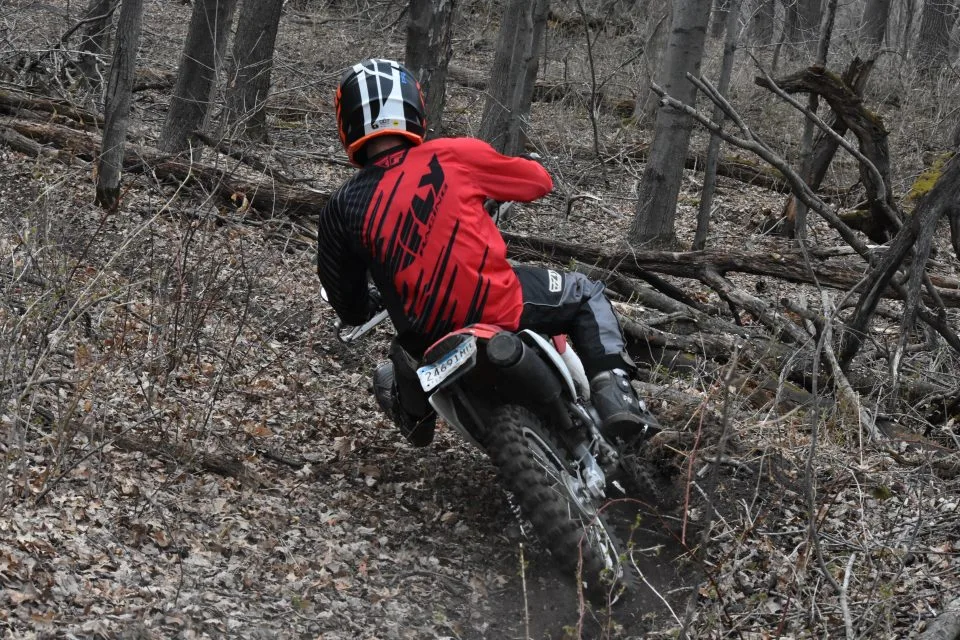
How often should I stand while riding?
As much as you can. Actually, if that were the case, then I would have terrible riding technique…
In all seriousness, it's good to practice standing as much as possible, especially when you're new to riding off-road. Standing on your bike while riding gives you the ability to leverage your body and weight to adapt to the changing terrain more easily.
Whether it's going up a steep hill or approaching a log in the trail, you can move more body weight quicker to make the bike do what you want it to while standing.
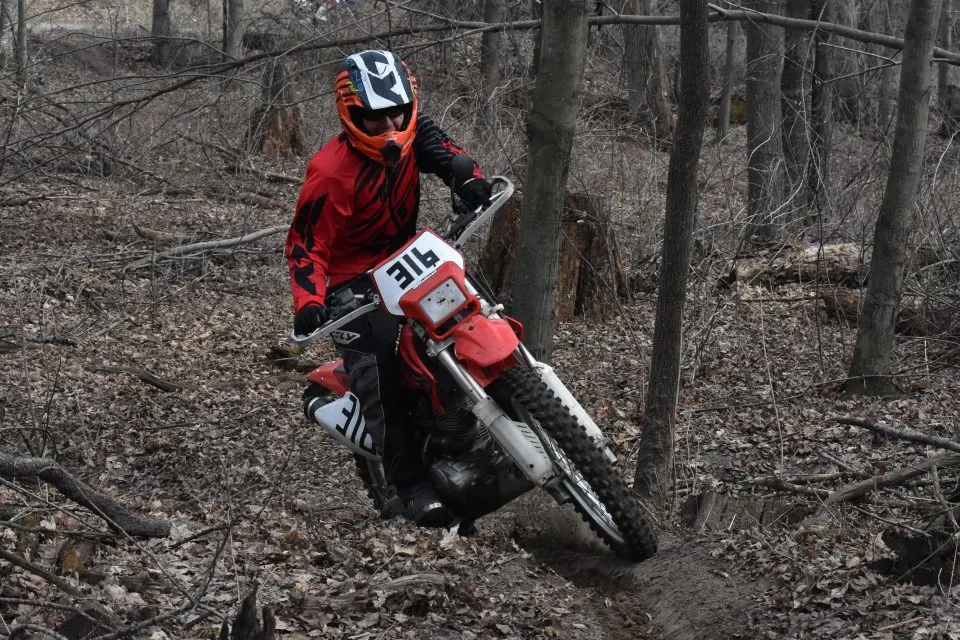
So, how often should you stand while riding your dirt bike? My definitive answer would be: it depends. Okay, but it really does. If it's quicker to keep your butt on the seat, then sit. Otherwise, try standing more often and see how it affects your riding ability.
Where to put my feet on the pegs
If you've played other sports, then you might be familiar with the term "the balls of your feet". This is the spot just behind your toes, and it's where you want to place your feet on the footpegs.
If you get lazy and keep your heels on the pegs then you won't have the mobility of using your heel to absorb harsh impacts.
The only time you should move your feet on the pegs is when you're shifting gears or pressing down on the rear brake pedal.
How to use your legs to double as suspension
I just mentioned one part of this technique. Using your feet and heels can help absorb impacts, but you can take even more advantage with your legs.
To do this, you must be standing. Whenever there's a drop-off, log, rough terrain, or virtually anything that compresses suspension, you can use your legs to soak up some of the impact.
This is essentially giving you more suspension travel. It's also a simple technique I use when I'm riding a dirt bike with suspension that's too soft for the terrain in riding, or when the trail is really rough and whooped out.
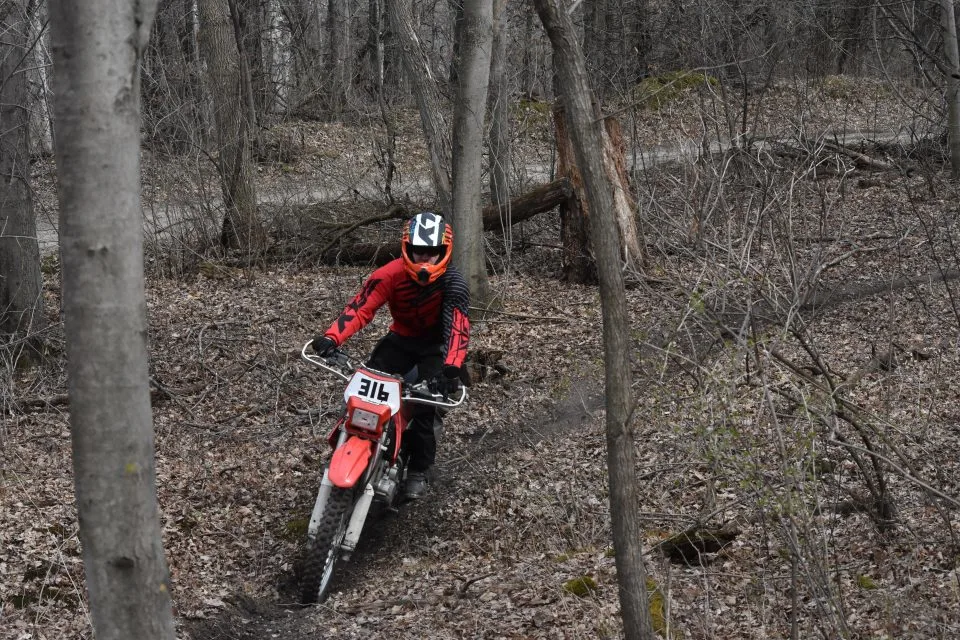
Using your legs to stay on 2 wheels in corners
Why do dirt bike riders stick their legs out in corners while street bike riders keep they're feet on the pegs. This simple riding technique is primarily for balance, but it also adds a little more weight to the front end, making it easier to turn.
So, how is this done? Well, when you're going into a rutted left-hand corner, you get up on the front of the seat and stick your left leg (always the inside leg) out and point out forward so that it's near the front forks or axle.
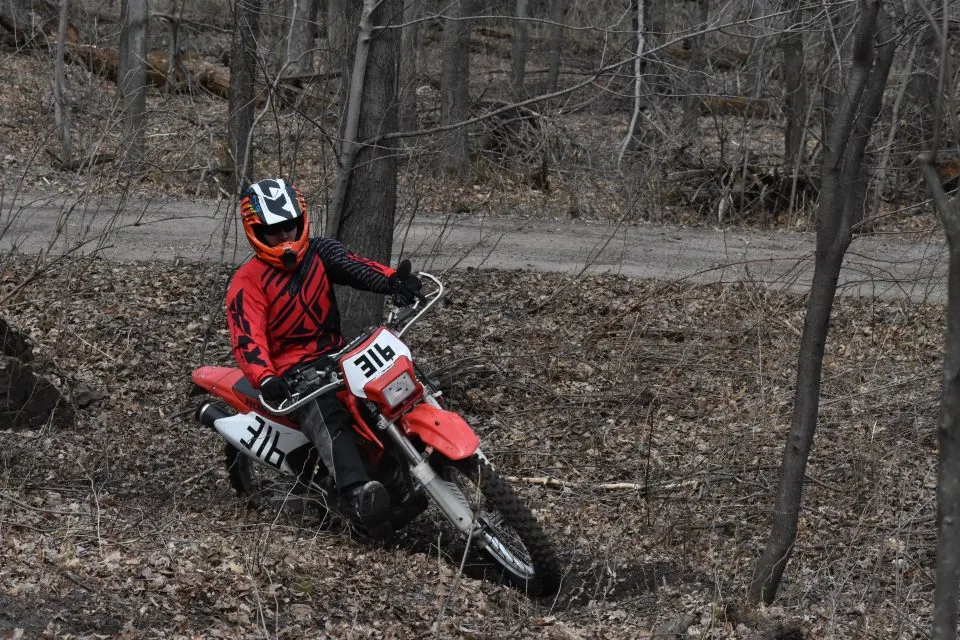
It's a small amount of body weight that you can shift to balance while leaning over in the turn. You can also use your foot to hold yourself up if you lean over too far.
Just be careful that you don't get it caught or else it's easy to twist your ankle and/or knee.
Clutch Techniques
Using the clutch use one of the first things you learn on a dirt bike. It's also one of the most important riding techniques if you want to be a skilled rider. Which is why it's sad that I see so many new riders stop practicing their clutch control once he or she thinks they're "good enough".
So, what is proper clutch technique? The top habits you should make with the clutch are:
- Use only 1 or 2 fingers on the clutch lever
- Always keep a finger on the lever for better traction time - this simple technique alone helped take my riding to the next level
- Practice slipping the clutch as little as possible - your bike will last longer and overheat less
- Use the clutch to limit horsepower and produce traction - sometimes slipping the clutch can be the difference between getting up a steep hill and getting stuck halfway up
Technical Dirt Bike Riding
Trail riding is one of, if not the most, popular type of dirt bike riding. You don't need a high performance bike, there's many public trails to ride, and you can choose beginner or expert level trails.
So, how can you take your riding technique and skill the next level? First, you need to master the basic techniques listed above. If there's still one skill that's a struggle for you, it's going to hold you back in the long run.
Once you have the fundamentals down, it's time to practice riding over more advanced level obstacles and terrain. Technical trail riding, also called enduro riding, typically involves steeper hills, bigger logs and rocks, off-camber corners, and slippery conditions.
To be a good enduro rider, you must hone your balance, clutch, and momentum skills.
Learning Proper Technique Is The Best Mod?
Buying a new $400-1200 exhaust is one of the most common mods riders to their dirt bike. But does it actually give you that much back in your riding performance?
The answer for almost all of us is a resounding "No".
Why? Because we can't take full advantage of the power that our bike has in stock form. Instead, my number one tip to become a better rider faster is to learn proper technique so that you will ride with confidence and not crash so often.
Want to get started learning in the quickest way possible? Tap here to learn proper off-road techniques.

